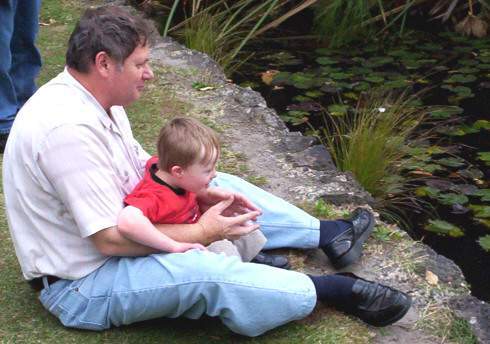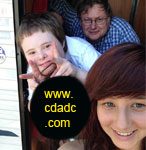

Translocation Trisomy 21 – Are you a genetic carrier of Down Syndrome?
Translocation trisomy 21 is an extremely rare form of Down Syndrome.
As you might be aware, Down’s Syndrome was named after Dr. Down, who observed that some people seemed to look the same – short, stocky, intellectual deficits, etc – and wrote about his observation. Later the term Down’s Syndrome or Downs Syndrome became popular to cover this group of features.
As the decades rolled on, advances into the genetic make up of Down’s Syndrome advanced.
The understanding that Down Syndrome was caused by an additional chromosome 21 was breaking news in it’s day – hence Trisomy 21 was coined, trisomy meaning three, 21 referring to the chromosome repeated three times.
We came to understand about Mozaic Down Syndrome, which was like Trisomy 21, except not every cell had the extra chromosome. In other words, the error in replication occurred after conception. The cells affected determined how mild or severe the Down Syndrome would be. In effect, a person could have, for example, legs or arms that were Down Syndrome in nature, while the body remained free of the extra chromosome.
Later, translocation trisomy 21 was discovered, but little talked about beyond specialist medical circles.
In fact, when we had Jacob, we had no idea that translocation trisomy 21 even existed – that was back in 2000. I remember being very surprised when I came across “translocation trisomy 21” when searching as much information on Down Syndrome as I could to help my son.
Translocation Trisomy 21: A risk of Down Syndrome for your kids and your kids’ kids.
Translocation Trisomy 21 is a rare cause of Down Syndrome. Translocation Trisomy 21 is the cause of around 1/20,000 pregnancies being a Down Syndrome pregnancy.
The risk of genetically inheriting and being a genetic carrier via Translocation Trisomy 21 is about 1/80,000 – a carrier of translocation trisomy 21 may show no characteristic of Down Syndrome, but their kids are at greater risk of either being a carrier themselves or of having Down Syndrome.
A carrier of translocation trisomy 21 can be a mother or a father.
Translocation Trisomy 21 involves an extra part of chromosome 21 being involved in the replication process, instead of the extra whole chromosome 21 being involved.
Translocation Trisomy 21 that is carried by a parent which exhibits no features of Down Syndrome appears confusing to most if their child is obviously Down Syndrome in appearance.
To explain this, it has been suggested that the Translocation Trisomy 21 in the parent, is somehow being counterbalanced by other gene activity in the parent, but the child does not have the gene protection for some reason and therefore displays the symptoms. An interesting position, as it suggests we may be able to one day turn off Down Syndrome at a gene level somehow.
Further, in around 75% of translocation trisomy 21 Down Syndrome births, neither parent is a carrier and a chromosome mutation in the egg or sperm is responsible for the translocation trisomy 21.
To put it bluntly, if there is someone with Down Syndrome who is related to you, then you have a remote possibility of being a carrier of Translocation Trisomy 21 – if it concerns you, genetic testing can tell you if you are a Translocation Trisomy 21 carrier or not.
The above is based on the work of Paul J. Benke, M.D., Ph.D. , Virginia Carver, Ph.D. and Roger Donahue, Ph.D., 1995.


Leave a Reply
You must be logged in to post a comment.